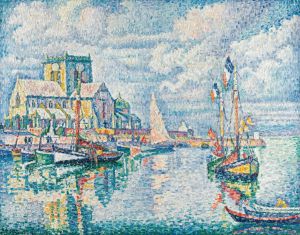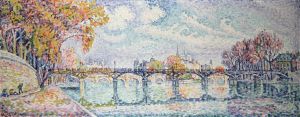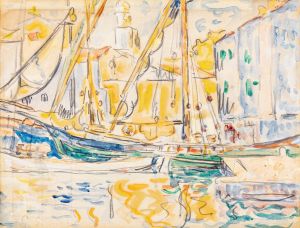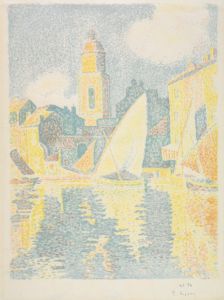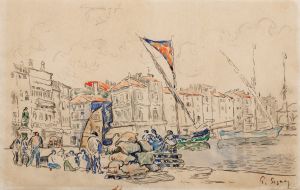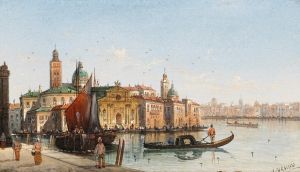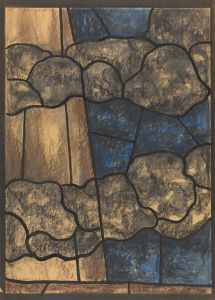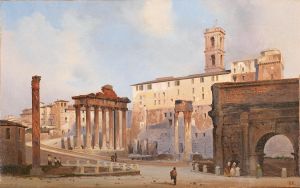
Venise. La Salute. Vert
A hand-painted replica of Paul Signac’s masterpiece Venise. La Salute. Vert, meticulously crafted by professional artists to capture the true essence of the original. Each piece is created with museum-quality canvas and rare mineral pigments, carefully painted by experienced artists with delicate brushstrokes and rich, layered colors to perfectly recreate the texture of the original artwork. Unlike machine-printed reproductions, this hand-painted version brings the painting to life, infused with the artist’s emotions and skill in every stroke. Whether for personal collection or home decoration, it instantly elevates the artistic atmosphere of any space.
Paul Signac's painting "Venise. La Salute. Vert" is a notable work by the French Neo-Impressionist artist, renowned for his innovative use of color and technique. Signac, born in 1863, was a leading figure in the development of the Pointillist style, a technique characterized by the application of small, distinct dots of color that are applied in patterns to form an image. This method was pioneered by Georges Seurat, with whom Signac worked closely.
"Venise. La Salute. Vert" is part of Signac's series of works that capture the enchanting cityscapes of Venice, a city that inspired many artists with its unique light and architecture. The painting specifically depicts the Basilica di Santa Maria della Salute, a prominent and iconic church in Venice, known for its grand Baroque architecture and its location at the entrance to the Grand Canal. The basilica is a frequent subject in Venetian art due to its striking dome and picturesque setting.
Signac visited Venice in the early 20th century, a period during which he was deeply engaged in exploring the effects of light and color. His Venetian works are celebrated for their vibrant palette and the way they capture the shimmering reflections of the city on the water. In "Venise. La Salute. Vert," Signac employs his signature Pointillist technique to convey the luminous quality of Venice's atmosphere. The use of green ("vert" in French) in the title suggests a particular emphasis on this color, which may be used to highlight the verdant reflections in the water or the play of light on the basilica's façade.
Signac's approach to painting was heavily influenced by scientific theories of color and perception. He believed that colors, when placed side by side, could blend in the viewer's eye to create a more vibrant and harmonious effect than traditional mixing on a palette. This principle is evident in "Venise. La Salute. Vert," where the juxtaposition of complementary colors enhances the overall luminosity and depth of the scene.
Throughout his career, Signac was committed to the ideals of Neo-Impressionism, which sought to bring a more structured and scientific approach to Impressionism. His works, including "Venise. La Salute. Vert," reflect his dedication to capturing the transient effects of light and atmosphere through meticulous technique and a deep understanding of color theory.
Today, Paul Signac's paintings are celebrated for their innovative approach and their contribution to the evolution of modern art. "Venise. La Salute. Vert" stands as a testament to his skill and vision, offering viewers a glimpse into the serene beauty of Venice through the eyes of a master colorist. The painting is part of various collections and continues to be studied and admired for its artistic and historical significance.





